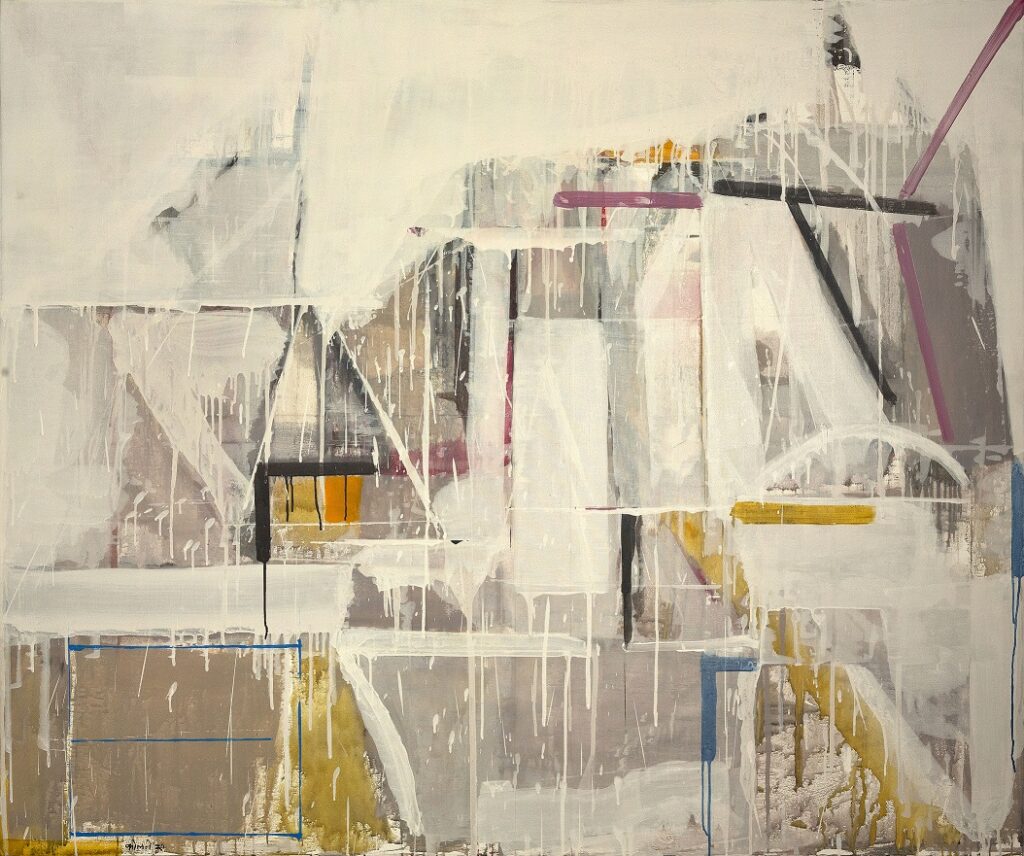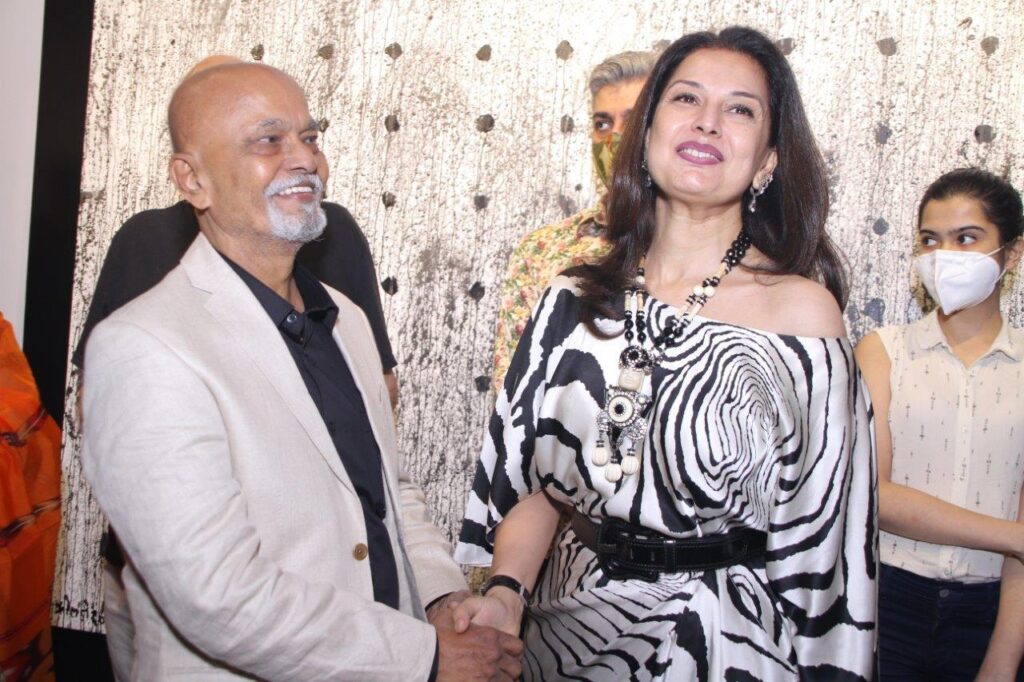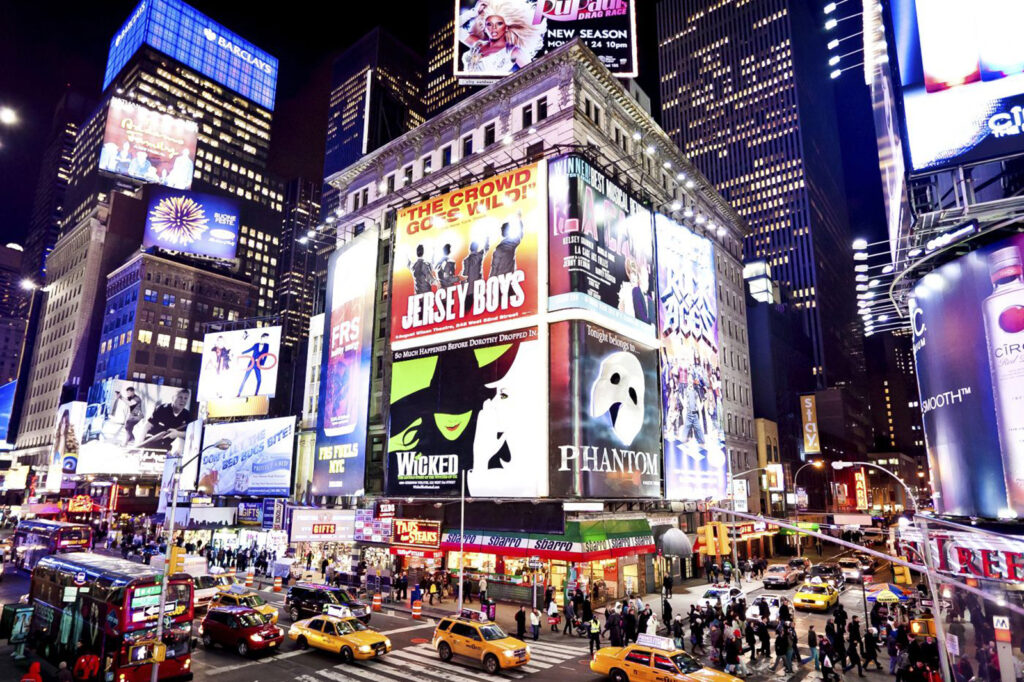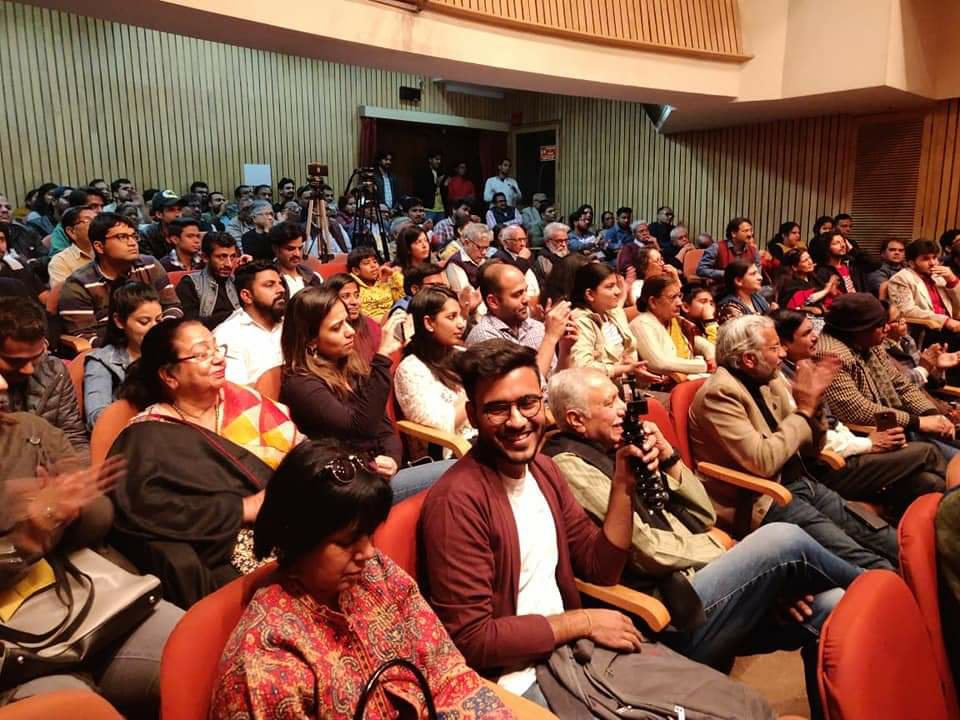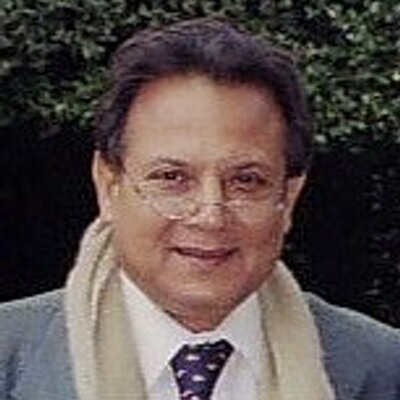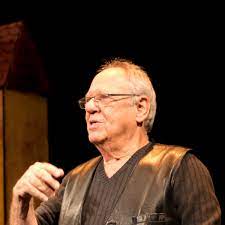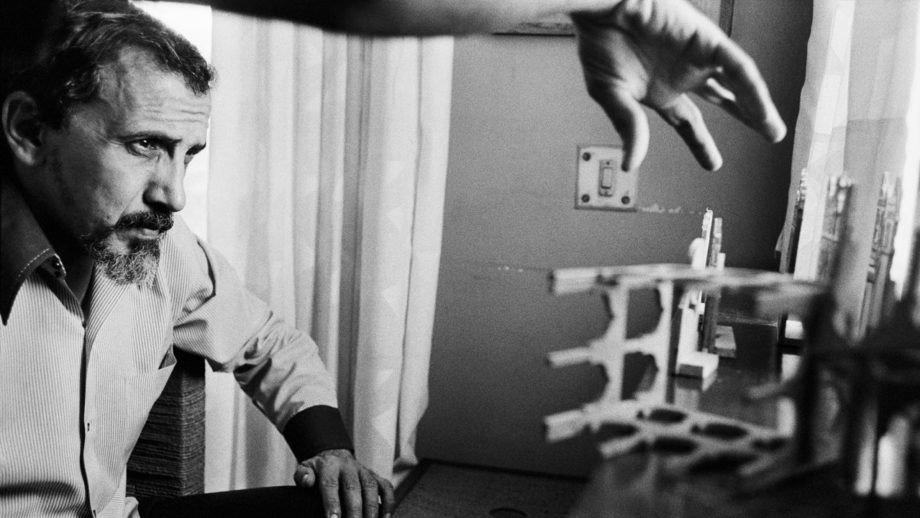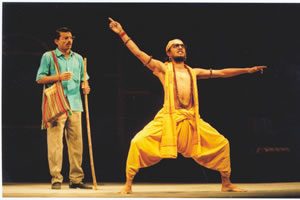
Come admission time in Delhi University, a strange ritual involving drama is enacted every June and July in several colleges. This ritual concerns admissions where the minimum marks required for entry into various courses are lowered for candidates with a demonstrable talent in theatre. Well, not just theatre: other Extra-Curricular Activities (generally described as ECA) such as music, debating, dance, the fine arts and photography also qualify. I’ll confine my comments to the situation concerning theatre, though much of what happens here is broadly true of the other activities as well.
The ritual is interesting for several reasons, not the least of which is the keen interest shown in it by those members of the University community who do not subscribe to either its aims or its methods. For those who do, it’s a gratifying time because artistic activity is now granted however grudgingly some place in the sun. For the greater majority of those who don’t, it’s gratification time when non-academic achievement becomes the means by which academic under-achievement can be given the go-by. And, at a time when eligibility criteria and admission irregularities are being closely monitored by the media and sometimes even mediated by the courts, the little ‘discretion’ that ECA admissions allow seems to go a long way indeed!
As for the candidates, it goes without saying that this opportunity is embraced gladly by those who stand to benefit, without any grumbling of the kind that ‘reservation quotas’ inspire from those who don’t. It must be remembered though that ECA admissions have always been used by candidates as an insurance against their not getting admission into the course/college of their choice rather than as a first-choice option. In fact, if one were to go by the quality of most of the applicants, being unable to secure an admission through the general channel appears to be the main eligibility criterion! Yet, listening to these applicants introduce themselves as being driven by a great thirst for theatre, one can see that the natak begins well before they have mounted the stage!
That’s the questionable underside of such admissions; but there are other questions, more legitimate and no less problematic for all that.
For instance, these admissions bring to a head the difficulty of evaluation and ranking. A prickly procedure at the best of times, acts of ranking becomes decidedly iffy when it involves no more than a one-off stab at serialising creative achievement and potential. Moreover, with subjectivity being both dominant practice and cognitive tool in art appreciation, how does this intermesh with a policy of ranking which necessarily invokes the application of some kind of objective or at least commonly acceptable criteria? Also, is it possible to set up a grid of checks and balances to shape and circumscribe such evaluation?
Of course, art activity is judged one way or another all the time, by way of reviews and commentaries in the media, or through selections for scholarships, grants and festivals. But rarely do such judgements, upsetting as these are sometimes, stamp actors or grade performances with the kind of hierarchical finality that is found in the admissions process. ECA committees are known to blithely wield axes that even the most rabid of reviewers would flinch from using.
After all, the one thing that loosens a reviewer’s tongue is the comforting lack of tangible consequence. The knowledge that reviews (often published after the event and therefore having a negligible impact on ticket sales, as in Delhi) are primarily cud for discussion enables reviewers to offer free and easy critical response. In contrast, the hardening of subjective opinion into summary judgements that slam the door shut on young hopefuls cannot but be a frightening responsibility. Sadly, it is rare to see this responsibility being judiciously exercised. All too often, ECA committees make their choices, unperturbed by the insufficient evidence on which these are based.
Another interesting aspect of this admission policy lies in what it reveals of attitudes towards and the space given to cultural activity within our educational institutions. (There is surprisingly little difference between schools and colleges in this regard.) At first glance, the fact that provision is made for such admissions appears an enlightened measure, for it implicitly acknowledges that artistic achievements can be factored into determining the worth of a candidate. The obsessive pursuit of better and better marks in the Board examinations has made most schools downgrade non-academic creative activity as a secondary and even irrelevant practice. Students who spend time nurturing diverse interests and talents do, in all probability, end up with lesser marks than single-minded swotters, but they are not poorer students for that. In fact, the opposite is more likely to be true. So, what’s the harm if extra-curricular talent is used, in a little reverse flow, to enhance the candidate’s chances of admission, right?
No harm at all, especially as you can’t remember the last time when you saw cultural practice command a premium in the marketplace. Yet, things aren’t quite hunky-dory. A second glance reveals that this ‘enlightened measure’ is riddled with contradictions that float around unacknowledged as institutions blunder on with quaint notions of the education process. Why, I sometimes wonder, do colleges embark on these valuations of artistic worth if nothing changes down the line? It is the rare college that takes theatre activity seriously enough to offer realistic support in terms of scheduling, administrative support, budgetary grants and end-of-term honours. When institutional calendars designate cultural activity as mere recreation, it is understandable why admission processes too value and evaluate creativity in confusing terms.
The real problem, therefore, with this process is not, as is commonly argued, chicanery or the underhand attempts to buck the system – great Indian malady that: “have system, will buck!” – but that it lacks clarity of purpose. It is far easier to tackle the depredations of corruption or nepotism than it is to tackle the mess created by a muddle-headed approach to sports and cultural activity.
An instance of this mess is the divergence in the methods employed by different colleges to select candidates. The fact that there are no University guidelines for such admissions doesn’t help because it leaves college administrations free to flounder. In the absence of tested procedures, the time spent on evaluating an applicant’s artistic ability varies enormously. At some colleges, theatre candidates are disposed of with brutal efficiency in a flat 10-15 minutes each: 5 minutes for a brief performance of a prepared piece and the balance for displaying their general knowledge (‘name three Indian dramatists’) and their certificates to an interview panel. On the other hand, at another college that I shall leave unnamed, some 40 candidates are processed through several elimination rounds (comprising prepared pieces, extempore performances, text-analyses, solo and group improvisations, and interviews) that add up close to 30 hours over 2 days.
Unlike a casting audition where the playscript provides some framework for selection, general testing for talent in drama is fraught because of the absence of clear-sighted goals, the procedures by which these can be sought, and a level playing field where applicants from different backgrounds and schools are played off against one another. For instance, does one or does one not distinguish between applicants who have studied in schools that possess a reasonable equipped auditorium, employ a drama teacher and place theatrical activity in the weekly timetable and those whose schools have no time or money for such things? This is probably why admission committees rely on applicants’ certificates and brief presentations as a safe option. This procedure has the merit of appearing so objectively quantifiable that its inadequacy never ever comes to the fore.
Relying on certificates merely transfers the problem elsewhere, for then how does one assess the worth of such certification? In the absence of recognised inter-school drama festivals or training institutes, the drama certificates that most applicants produce relate to internal school activity, often indicating no more than the school’s initiative in matters cultural. This is a far cry from the creditworthiness of certificates produced by sportspersons to gain concessional admissions into colleges. With several tournaments organised for different age and proficiency levels in which students of different schools compete on relatively more level playing fields, sports certificates are fairly reliable indicators of achievement and potential — reliable enough, in fact, for forgery to have become a regular proposition!
It is equally risky to judge these young candidates by their prepared pieces alone, for it may be someone else’s ability – an adult teacher/director through whose hands the candidates have passed – that gets judged. (Of course, this cuts both ways when you consider the quality of drama instruction available in even our best schools.) Another problem is that these presentations often drip with mechanically heightened emotion — in the mistaken but understandable conviction, given the all-pervasive television soaps in which whole generations are being rinsed, that powerful acting is always exhibitionistic in intent. Finally, the ‘prepared piece and certificates’ formula is inadequate because it merely ascertains, however dubiously, the candidate’s past achievement without assessing her future potential. Admissions determined through these criteria end up looking like rewards for work already done, like certificates of merit that conclude rather than initiate a new activity. Surely the purpose of special admissions is the benefit that the college aims to derive from the student’s stay at the institution. What is therefore needed is a selection process that offers a more accurate picture of the candidate’s potential to work in the college – a process that tries, in a manner of speaking, to get beneath the skin, with the aim of observing individuals at work rather than superficially evaluating the packaged product that they make of themselves.
Such a process will still acknowledge past achievement, but only to the extent that it throws light upon the candidate’s potential. It will focus on assessing individual creativity by challenging it through the unpredictable structure of solo and group improvisation exercises. Apart from checking the candidate’s ability to work within a group, to accept direction and to critically analyse his own creative choices, the fact that all this takes an enormous amount of time will also make this process a test of stamina. The pressure to be creative under conditions of tension and fatigue is arguably the best test of performance ability, though one has to be careful not to overdo such terms of endurance.
Finally, the efficacy of any selection procedure, even the most enabling one, depends upon its rationale being understood and its implications worked out. The selection process’s emphasis on ‘potential’ and ‘usefulness’ rather than ‘past achievement’ means that in the case of over-qualified candidates, some hard decisions have to be taken. Some years ago, the son of a renowned violinist, a budding violinist himself, was granted an ECA admission at the college where I teach. But, between his classes and his tours with his father, he had no time left for playing in or for his college, and finally graduated from the institution having graced it with his instrument just a couple of times during that period. In drama too, many applicants today pop up with some experience of having acted for television. That sounds impressive alright, but this can be a real pain in the neck. For, not only are such candidates infected by the work ethic of the television studio, their commitments to the small screen leave them with little time for participating in college drama activity. Only colleges which bask in the reflected glory of their alumni welcome such stars. Others, with work goals defined in the present, continue their work with ordinary mortals and realisable potential.
Potential for what, is another question altogether. The academic year begins well with ECA admissions, but a couple of months down the line cultural activities get treated like the proverbial stepchild. For sports, there is a hectic University calendar; culture gets left to college students and their fizz-drink sponsors for whom culture is confined within Ramp Displays (ubiquitously christened Fashion Shows’) and Rock Shows. (The University does have a Culture Council in place but that is badly in need of some counsel and resuscitation.) Sports budgets are large and inviolate; ECA budgets are less than a tenth and constantly eaten into. Sports activities are run by faculty members appointed for the purpose; cultural activities are supervised, if at all, by regular teachers on a voluntary basis.
It is therefore not unusual to find that the categories under which the ECA admissions are made have precious little to show by the end of the year. Lack of accountability is in fact built into the system with teachers not being directly responsible for ensuring that the ECA students work, in the same manner in which they are accountable for taking classes or finishing their courses. In such a context, it is not out of place to wonder why colleges go through the trouble of having these admissions in the first place. The answer, I’m afraid, is not flattering at all.
If this is an unrelievedly depressing picture, let me point out that all cultural initiatives in the University have not collapsed. It is merely the system of the ECA admissions that has not delivered, not because it has been hijacked by vested interests but because the anxiety to appear just (more than the desire to be just) has led to the selections being carried out in thoroughly unimaginative fashions. Meanwhile, plays have been staged, instruments played, sketches made and photographs displayed, often on the strength of students who have not had to declare their artistic talents in order to gain admission.
Interestingly, the ECA admissions have worked when college administrations have not shied away from acknowledging the subjectivity of the selection process, and have insisted merely on it being an informed, committed and transparent subjectivity. In that lies the only insurance against possible abuse of such ‘licence’. Testing has to be entrusted to those teachers and senior students (and alumni) who have formulated projects for the year and will be responsible for carrying them out. An audit of each year’s activities will also prove useful. Finally, as in so much else, the viability of the system boils down to the integrity and commitment of the persons involved. There is no getting beyond this basic fact. At any rate, are these not crucial ingredients in any form of cultural practice?

